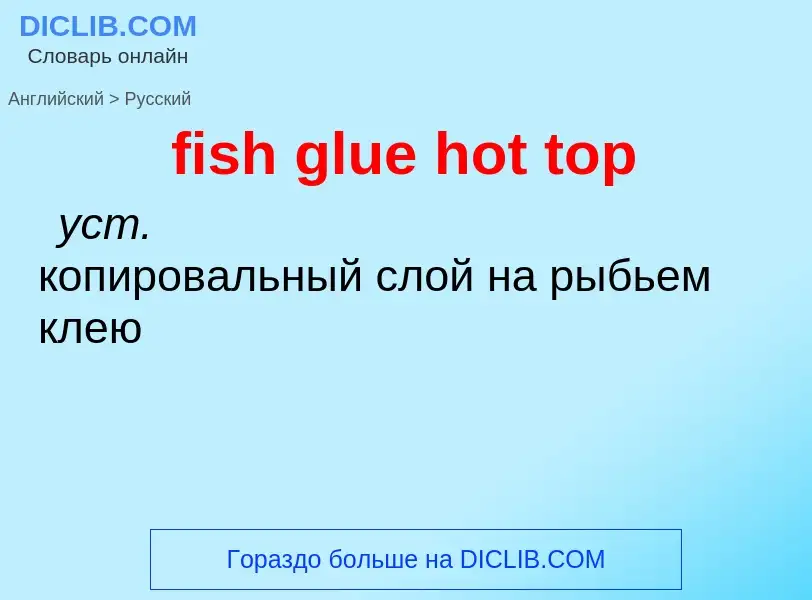Перевод и анализ слов искусственным интеллектом ChatGPT
На этой странице Вы можете получить подробный анализ слова или словосочетания, произведенный с помощью лучшей на сегодняшний день технологии искусственного интеллекта:
- как употребляется слово
- частота употребления
- используется оно чаще в устной или письменной речи
- варианты перевода слова
- примеры употребления (несколько фраз с переводом)
- этимология
fish glue hot top - перевод на русский
строительное дело
клей, требующий разогрева (перед использованием)
клей, применяемый в горячем состоянии
общая лексика
пистолет для склеивания
Определение
---
Радий Геннадиевич (р. 1924), русский писатель, литературовед. Критические работы: "Назым Хикмет" (1960), "Джалалиддин Руми" (1972) и др. Книги прозы: "Иду с тралом" (1966), "Турецкие дневники: Встречи. Размышления" (1977), "Однажды непременно" (1984) и др.
Википедия

Hot-melt adhesive (HMA), also known as hot glue, is a form of thermoplastic adhesive that is commonly sold as solid cylindrical sticks of various diameters designed to be applied using a hot glue gun. The gun uses a continuous-duty heating element to melt the plastic glue, which the user pushes through the gun either with a mechanical trigger mechanism on the gun, or with direct finger pressure. The glue squeezed out of the heated nozzle is initially hot enough to burn and even blister skin. The glue is sticky when hot, and solidifies in a few seconds to one minute. Hot-melt adhesives can also be applied by dipping or spraying, and are popular with hobbyists and crafters both for affixing and as an inexpensive alternative to resin casting.
In industrial use, hot-melt adhesives provide several advantages over solvent-based adhesives. Volatile organic compounds are reduced or eliminated, and the drying or curing step is eliminated. Hot-melt adhesives have a long shelf life and usually can be disposed of without special precautions. Some of the disadvantages involve thermal load of the substrate, limiting use to substrates not sensitive to higher temperatures, and loss of bond strength at higher temperatures, up to complete melting of the adhesive. Loss of bond strength can be reduced by using a reactive adhesive that after solidifying undergoes further curing, whether by moisture (e.g., reactive urethanes and silicones), or ultraviolet radiation. Some HMAs may not be resistant to chemical attacks and weathering. HMAs do not lose thickness during solidifying, whereas solvent-based adhesives may lose up to 50–70% of layer thickness during drying.


